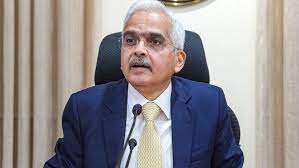The mundane topic first – the RBI MPC decision committee by a unanimous majority maintained the policy interest rate unchanged, one member having voted for a rate cut by 25 bps. Furthermore, the stance remains unchanged to “withdrawal of accommodation”. And the second point is more important. As in the case of any other market, the trading community had been trying to lead the RBI into changing the stance to “neutral”.
The economic landscape never really warranted that the RBI would lower its policy repo rate in this policy. India appears to be in a sweet spot – high growth that exceeded everyone’s expectations and containment of inflation dynamics. The backdrop to this policy was slowing inflation, especially that of the core part, which as per the last reading was below the 4% mark.
However, the RBI had been continuing to communicate to the market that irrespective of the core inflation coming down, the focus would be on the food inflation. And this policy was no different – food inflation risks have continued to be highlighted and as the RBI governor explained: “recurring food price shocks could interrupt the ongoing disinflation process…”. With food items corning a large chunk of the domestic inflation basket, clearing a higher food price for longer could lead to de-anchoring of inflation expectations and generalization of price pressures.
With the credibility of the RBI remaining sacrosanct and with the 4% inflation target remaining elusive, there was probably no chance for the RBI to pivot either on the rate or the stance.
Also read: RBI Monetary policy: Repo rate steady at 6.5%-10 key highlights
RBI MPC decision : Meeting Highlights
The ask of the market from this policy was possibly on liquidity – what the Governor communicates on the same and if there is any sense of dovishness that can be drawn out of this commentary. LAF liquidity deficit stood at an average of INR 2.1 tn in January 2024, mostly due to lower spending by the government and a pickup in CIC.
In January 2024, central government’s cash balance with RBI stood at an average INR 3.9 tn with the peak estimated at INR 5.2 tn. Thus, the context is that in the recent past, the system liquidity had been much tighter than can normally be expected. And, the RBI had been trying to manage the same by acting on both sides – draw out liquidity if needed and add liquidity if needed.
Effectively, what we thought that the RBI had been trying to do is to keep the liquidity deficit in a zone, whereby it does not look too restrictive (closer to the MSF rate). In essence, as should be the goal of the monetary policy, the operative rate should be as close to the policy rate as possible. And this is what the RBI was aspiring to achieve by acting upon liquidity from both sides.
A check on the data indicates that the VRR (liquidity infusion strategy) was undertaken when the overnight money market rates had been closer to the MSF rate. On the other hand, the RBI has also conducted VRRR to suck out additional liquidity if the overnight rate is below the repo rate.
During the press conference, RBI officials also cleared the air further on liquidity. The arguments ahead of the policy was that as RBI was infusing liquidity into the system, there is a likely change of stance in the offing. However, it was clarified that stance and liquidity operations are two separate issues. While the stance is to signal the future direction of policy, liquidity operations are to iron out liquidity conditions to ensure an operative rate that is close to the target rate.
In this policy, there is no talk of the real rate of interest, that is now at around 180 bps considering the 4.7% Q4FY25 estimate of the RBI on Headline CPI. Having said, I think that this is not really the core topic of discussion at this point, given the RBI continues to stress the fact that full transmission of the previous monetary policy action is still to be seen on the lending side. The Weighted Average Lending Rate (WALR) for fresh rupee loans has risen by 181 bps compared to a policy tightening of 250 bps.
Thus, the “higher for longer” story stays strong and relevant. Assessing the growth-inflation dynamics, we think that the RBI may only get a chance to cut rates around the August 2024 policy, but some risks have started forming on a delay even to this date.
